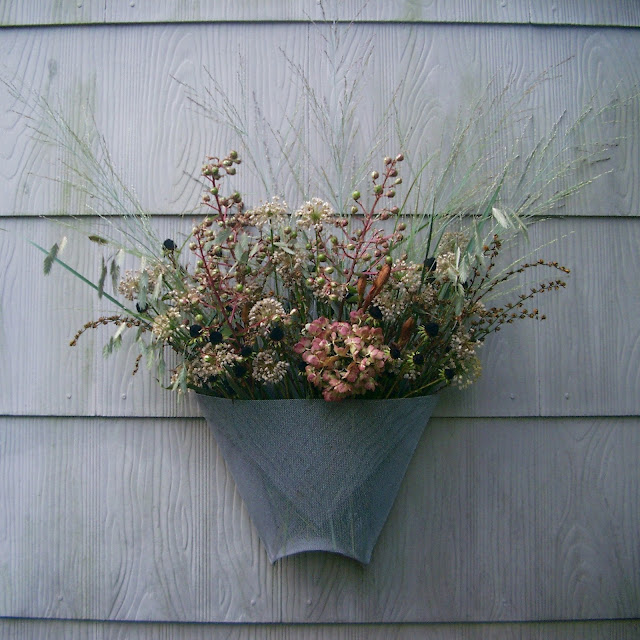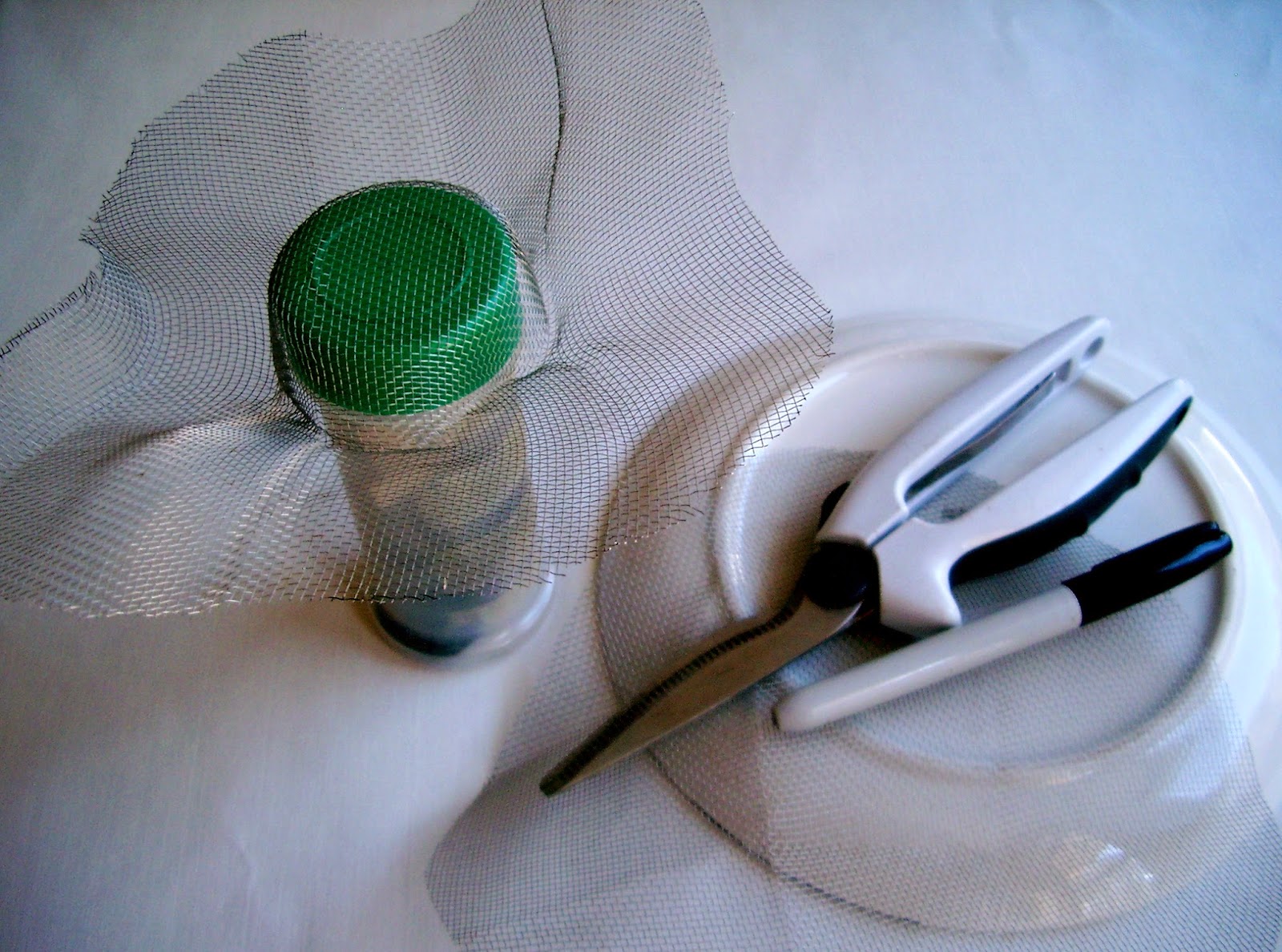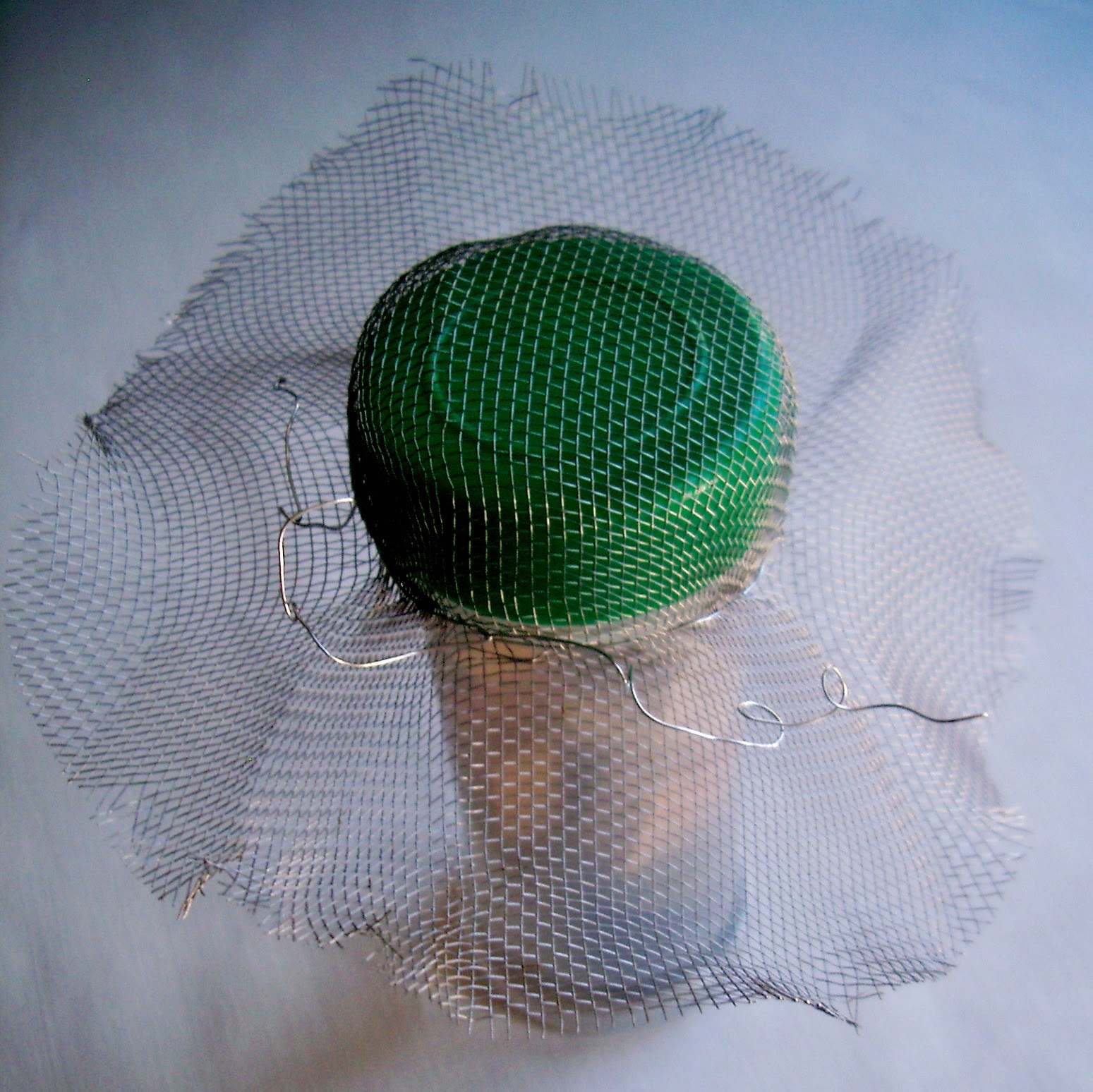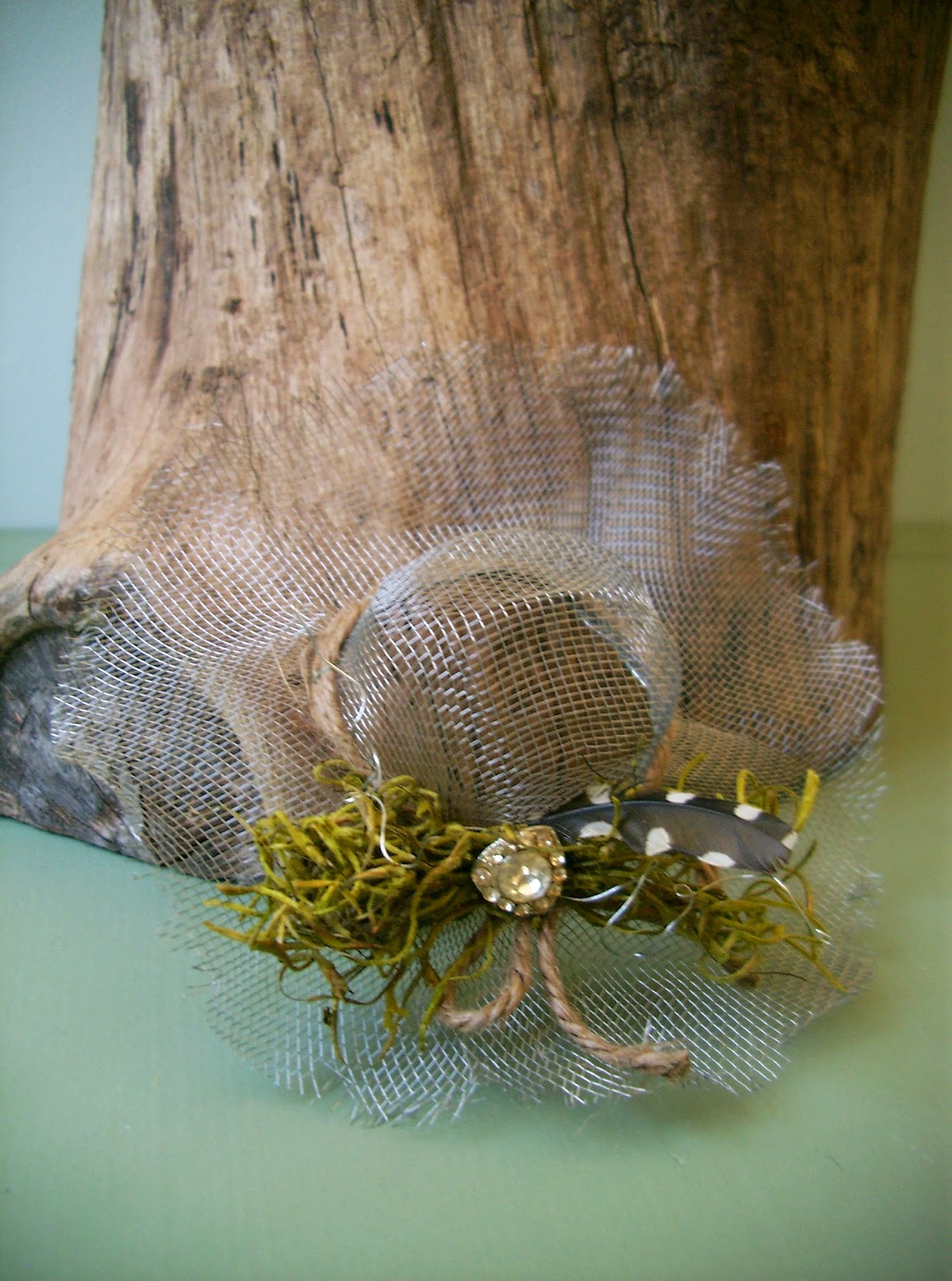MAKING A MESH
In a previous post published earlier this summer, I mentioned that I was having new windows installed. I love my new windows, and hope my purse will feel a difference with regard to saving on utility costs. I held on to a few old screened frames to use as drying racks for my lavender harvest and for drying flower heads for saving seeds. The remaining old screens were awaiting my hauling them to the scrap metal yard, but I’d eye them now and then to see if a repurposing idea would come to mind. So, I saved the screening as well as some other “notions” from the scrap pile.
| ©Linda Nelson 2016 |
Alas, the “aha” moment struck, and I was moved to make a creative little mess mesh.
Does not every home need a window screen tussie-mussie? I believe so, and my home was without……. until now. I cut the screen into a circle, folded it in half, rolled it up into a cone shape and simply slipped it into an old bed spring coil. I used one of those cone shaped treat bags as an inner sleeve to hold water.
 |
| ©Linda Nelson 2016 |
And, when you stare through a window screen, do you start thinking about origami? It happened to me, and that’s how I made this wall basket. You don’t need no stinkin’ paper to do origami; just use old window screens. I followed a random “paper cup” folding instruction tutorial.
 |
| ©Linda Nelson 2016 |
 |
| ©Linda Nelson 2016 |
See? Staring through window screens can be very inspiring.
Now, get creative.



